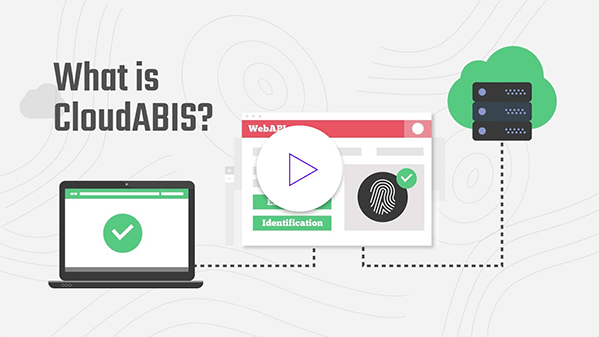The Future of Employment Screening: Combining Biometrics with Traditional Methods
In an era where technology is transforming every aspect of our lives, biometric data has become a powerful tool for enhancing security and accuracy in employment background screening. Biometrics, a unique physical or behavioural trait like fingerprints, facial recognition, or iris scans, provides an unparalleled layer of identity verification. However, with great power comes great responsibility.
As companies increasingly turn to biometrics for background checks, they must navigate a landscape fraught with ethical and privacy considerations. Here is a guide to biometrics, its benefits, and how to address privacy issues.
Understanding Biometric Background Screening
Biometrics refers to the measurement and analysis of unique physical features like fingerprints or behavioural characteristics like voice patterns. Some primary employment screening methods include:
- Fingerprint scanning: Organizations use fingerprint scanning as their primary method for running criminal background checks.
- Facial recognition: Matches facial features against official databases or ID photos.
- Iris and retina scans: Offer highly secure identification methods.
- Voice recognition: Analyzes vocal patterns for identity verification.
Combined with traditional screening methods like Triton Records Checks, these technologies create a robust verification system that reduces the risk of fraud and enhances accuracy.
The Benefits of Using Biometrics with Traditional Background Checks
Here are four benefits of integrating biometrics into background checks that make it a reliable solution for modern hiring practices.
-
Enhanced Accuracy and Security
The current method of background verification utilizes personal identification details such as names, birthdays, and residential addresses that hackers can easily manipulate. However, no one can duplicate a person’s distinct biometric features. This verifies that the person undergoing the screening matches the individual in official records.
The implementation of fingerprint scanning in criminal background checks enhances the accuracy of results through its ability to prevent wrong-person identifications. Strict regulatory requirements regarding employee screening are also present in many industries. Integrating biometrics ensures compliance by providing a tamper-proof method of identity verification, reducing the company’s liability in case of future incidents. The additional verification system in high-security industries like finance and government guarantees trust.
-
Faster and More Efficient Screening
Biometric systems cut down the processing duration substantially. Traditional background checks force candidates to wait for responses from multiple agencies for days to weeks before completion. National databases enable biometric verification to confirm identities, speeding up the hiring process automatically. The speed of onboarding becomes crucial for these industries because they require fast employee acquisition in healthcare, security, and transportation.
-
Seamless Integration with Existing Systems
One of the most significant advantages of modern biometric systems is their compatibility with traditional screening methods. Biometrics can be seamlessly added as a step in the existing background check process without overhauling the entire system.
For instance, companies can require fingerprint scans or facial recognition at the initial application stage. Companies can cross-reference this with traditional background checks. This layered approach provides enhanced security while maintaining familiar procedures for hiring teams.
-
Cost Savings in the Long Run
While organizations need to spend money at first to install biometric systems, they save substantial amounts over time. The efficiency of biometric screening processes lowers management expenses, and the correct identification prevents hiring errors. Using biometric records enables their repeated utilization during future screening processes, decreasing repetitive efforts.
Key Privacy Concerns in Biometric Screening
Biometric screening offers enhanced security but needs to address these four critical privacy concerns.
- Data security and breaches: Biometric data, unlike passwords, cannot be changed once compromised. A data breach involving fingerprints or facial recognition templates has lifelong consequences for the affected individuals, making robust data security essential.
- Misuse and unauthorized access: Biometric data faces constant danger of being employed outside its approved uses, which includes possible surveillance or unauthorized monitoring activities.
- Bias and accuracy: Facial recognition, in particular, has faced criticism for racial and gender bias, sometimes leading to false matches. Using these tools without rigorous accuracy testing could unfairly disadvantage certain groups.
- Data retention and deletion: Prolonged storage increases the risk of data misuse.
How Companies Can Address Privacy Concerns
The benefits of biometric integration remain obvious, yet privacy issues require proper acknowledgement. These concerns require companies to take the following actions:
- Obtain explicit consent: Candidates must receive clear information about biometric usage before companies can obtain written permission for such procedures. Employers should clearly explain:
- What purpose does the organization have for acquiring biometric information from employees?
- The explanation includes purposes of data utilization and storage duration.
- The duration of data retention.
- Individuals possess the right to deny consent authorization without experiencing discrimination.
- Implement robust security measures: Companies should deploy multiple security protocols that combine encryption methods with safe storage solutions to safeguard their biometric information.
- Limit data retention: Biometric data should be stored temporarily and wiped out properly after its retention period ends.
- Establish clear accountability: Appoint a Data Protection Officer (DPO) or a privacy compliance team to monitor the use of biometric data and handle concerns or breaches.
- Adhere to legal frameworks: Your organization must follow privacy laws, including:
- General Data Protection Regulation (GDPR): Mandates strict data protection measures.
- The California Consumer Privacy Act (CCPA): Maintains data transparency and grants individuals full authority over their data.
- Biometric Information Privacy Act (BIPA): Demands that users understand and consent to the collection and enforce specific data duration terms.
Transparency and adherence to privacy laws build trust with candidates and protect companies from legal repercussions.
Endnote
Combining biometric technology with traditional employment screening offers unparalleled accuracy, speed, and security. The system defends against fraudulent activities, simplifies hiring procedures, and maintains adherence to industry standards.
This combined method for employee verification will become the industry standard as companies handle privacy concerns with transparent data security practices.











